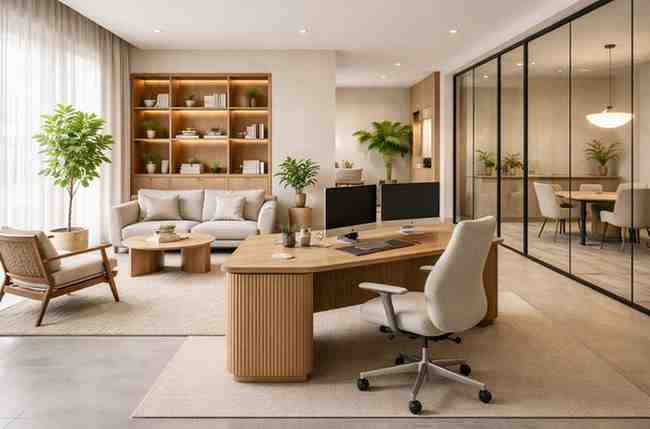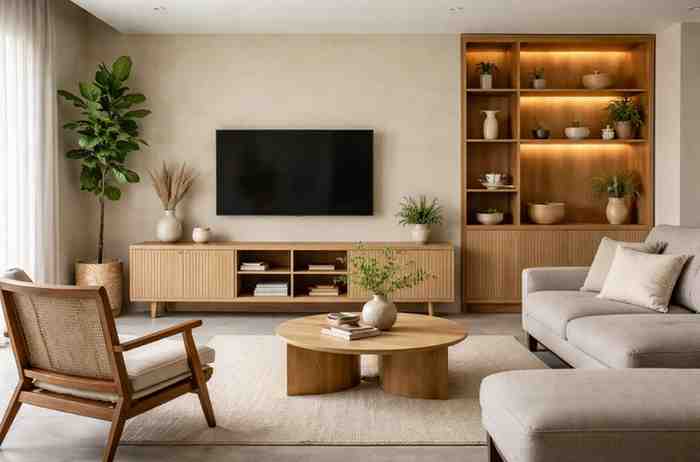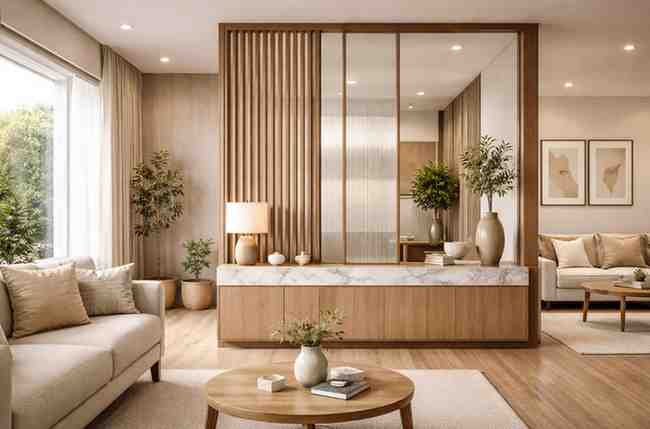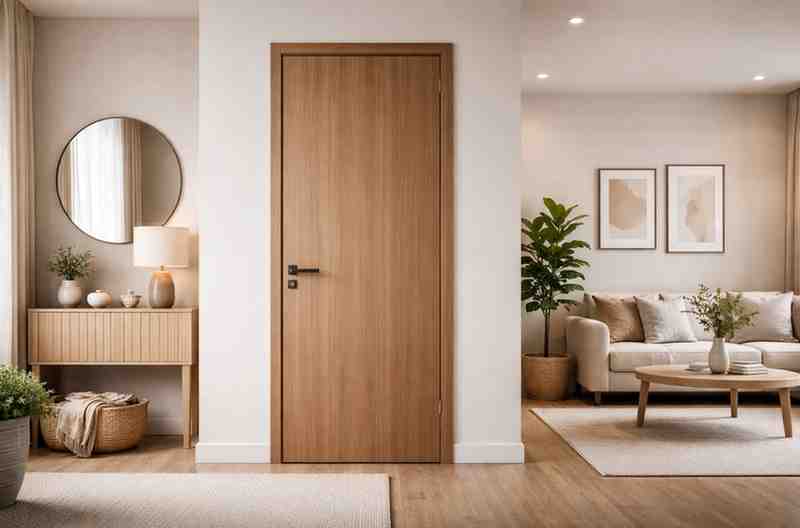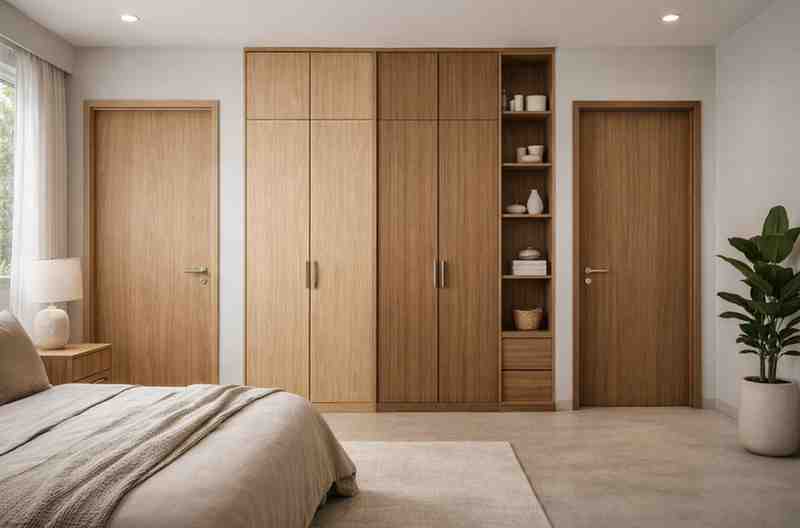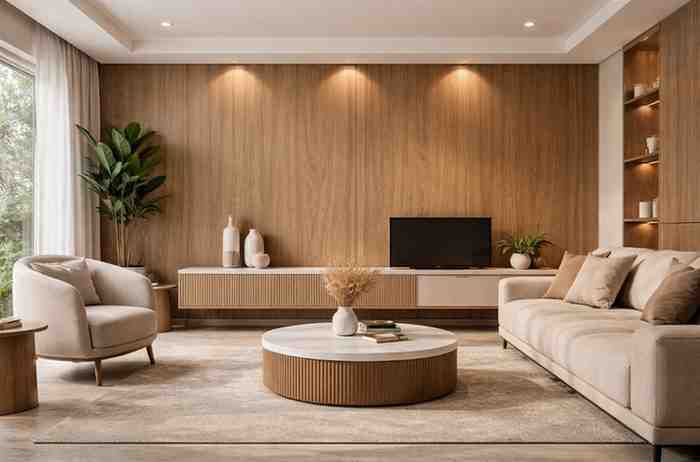Introduction
There are a lot of new buildings and interior design projects going on in India. It’s necessary to choose the correct materials, especially in regions that get wet a lot. Places along the sea, like Goa and Kerala, are constantly hot and humid. Modern kitchens and bathrooms in big cities like Mumbai and Bengaluru are also highly steamy. This means that water can always hurt wooden buildings. This is where speciality plywood, like Marine plywood and BWP plywood, comes in as a game-changer because it is so water-resistant.
Table of Content
ToggleWhy Use Marine or BWP Plywood in Wet Areas
The best waterproof wood product ever manufactured is marine plywood. It is meticulously made to last for a long time, even when it is constantly exposed to water.
- Superior Water Resistance: Marine plywood is created by glueing together highly strong hardwood veneers with exterior-grade phenolic resin glue that has not been watered down. This resin makes a bond that is exceptionally strong, stable, and waterproof. It doesn’t fall apart even after being in boiling water for a long period, which is one of the main tests that the IS:710 requirements require.
- Void-Free Construction: One of the main things that makes marine plywood different is that it has a centre with no holes. There are no holes in this plywood that may let water in and let it decay, like there are in conventional plywood. This makes it stronger all around and prevents water from getting into the core, which maintains the structure sturdy.
- Exceptional Dimensional Stability: Marine plywood has remarkable dimensional stability since its layers are of good quality and the resin bonds them together strongly. It doesn’t bend, twist, or swell when the humidity changes or when it comes into direct contact with water. This is vital for tough jobs.
- High Strength and Durability: The cross-banded layers of thick oak veneers disperse stress equally throughout the panel, making it incredibly sturdy and resistant to bending, impact, or fracture. Because of this, marine plywood can be used for portions of structures that need to be strong and last a long time.
Browse our premium marine plywood for unparalleled water resistance.
Benefits of BWP Plywood Indoors
Boiling Water Proof (BWP) plywood, sometimes called moisture-proof plywood, is a very popular and good choice for things that need to be very resistant to water and high humidity.
- High Water Resistance: BWP plywood is constructed with specific synthetic resin binders, most typically modified phenol-formaldehyde, that make a strong bond that doesn’t let water in. This means that, according to the IS:710 standard, it can be submerged in hot water for up to 72 hours without coming apart.
- Perfect for High-Humidity Interiors: It works wonderfully in areas inside that get a lot of steam and moisture, like laundry rooms, kitchen cupboards, bathroom sinks and utility rooms. BWP plywood protects these uses from water damage and keeps them looking nice even when they are exposed to water every day.
- Dimensional Stability in Humid Conditions: BWP plywood doesn’t swell or warp when it’s humid outside, unlike normal plywood. It stays in shape and is strong. One reason it doesn’t twist is because of a method used to release stress during production.
- Termite and Borer Resistance: Termites and borers don’t like Wigwam’s BWP plywood. When it’s created, it normally gets chemical stabilisers that make it exceedingly hard for termites, borers, and other wood-eating creatures to devour it. This makes it a good alternative for places that get attacked by living things a lot.
Upgrade to truly waterproof solutions! Explore our top-quality BWP plywood available for purchase now!
Marine Plywood vs BWP Plywood
- Water Resistance Level: Marine plywood (IS:710) is built to withstand constant and excessive water, even saltwater. There are no air holes in the core. BWP plywood, which is also called IS:710, is created for regions that are very humid and get water on a daily basis, such as kitchen spills.
- Manufacturing and Adhesives: Marine plywood is made with high-quality phenolic resin that is strong and has no holes in it. BWP plywood is made with a strong synthetic resin adhesive called modified phenol-formaldehyde.
- Application Suitability: Marine plywood is the greatest material for creating boats, docks, and other things that will be in water all the time. BWP plywood is perfect for usage inside, including in kitchens and bathrooms, or outside for brief periods when it won’t be submerged.
- Cost Effects: Marine plywood is normally more expensive since it contains better veneers, more phenolic resin, and stricter production regulations to make sure there are no air spaces. BWP plywood is a better choice for high-moisture interior purposes since it is cheaper and works better.
Which One Should You Choose
When choosing between marine plywood and BWP plywood for your project, there are several things to think about. The most crucial factor is how much and what kind of water it will get.
- Find out what the building needs: Marine plywood is stronger and lasts longer than normal plywood. This could be significant for projects that need to be able to hold a lot of weight and stay sturdy in tough situations. BWP plywood is usually sturdy enough for furniture, shelves, and wall panels that will be in wet situations.
- Balance Performance with Budget: Balance Marine plywood costs more, but it lasts longer and doesn’t get damaged as quickly when it gets wet. In the long term, you might save money because you won’t have to buy new stuff or fix things as often. BWP plywood is a fantastic alternative for regions that don’t get too wet because it is robust against water and bugs and doesn’t cost as much.
- Look at the manufacturer’s norms and requirements: Always check the technical specifications and make sure the board fulfils Indian Standards (IS:710 for both). Wigwam has a lot of information regarding maritime plywood and BWP plywood. In this manner, you can choose the grade that fits your demands for both performance and cost.
Conclusion
In the end, the battle against moisture in architecture and interior design is never-ending. But now builders and homeowners have powerful allies in the form of new varieties of plywood, such as marine plywood and BWP plywood. Marine plywood is the ideal choice for ships and the wettest places since it can stay in water for a long time without becoming damaged, is very strong, and is built to last.
Check out WigwamPly’s wide range to find the right waterproof plywood for your project!
FAQs
1. What is the primary difference between marine plywood and BWP plywood?
Marine plywood is for continuous water immersion (e.g., boats), while BWP plywood excels in high-humidity areas with frequent splashes (e.g., kitchens), both adhering to IS:710.
2. Can BWP plywood be used for outdoor applications?
BWP plywood can be used for light outdoor applications exposed to occasional rain, but not for continuous immersion or extreme weather like marine plywood.
3. Is marine plywood completely waterproof?
Yes, marine plywood is engineered to be completely waterproof, resisting delamination even under prolonged submersion due to its void-free core and phenolic resin.
4. What standard certifies marine plywood and BWP plywood in India?
Both high-grade marine plywood and BWP plywood adhere to the IS:710 standard in India, certifying their boiling water-proof properties.
5. Is BWP plywood resistant to termites?
Yes, Wigwam’s BWP plywood is typically treated with chemical preservatives to make it highly resistant to termites and borers.


